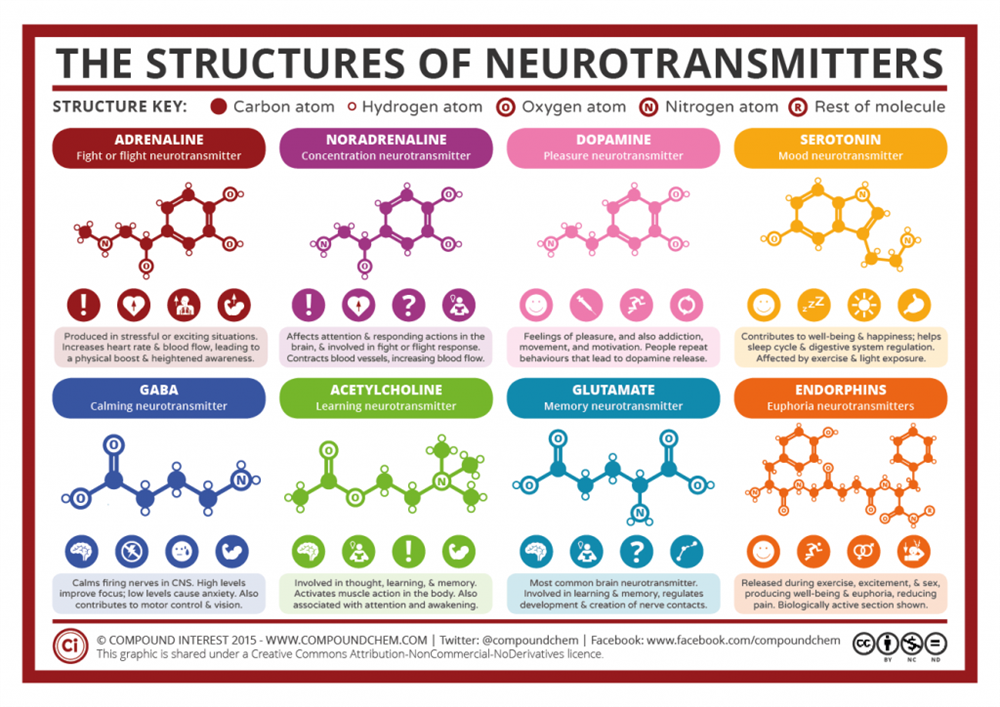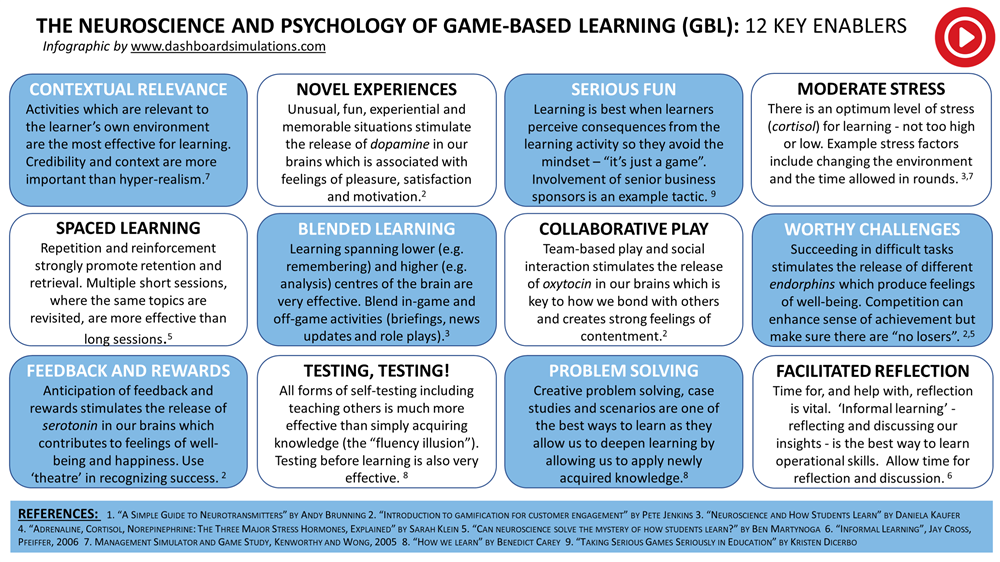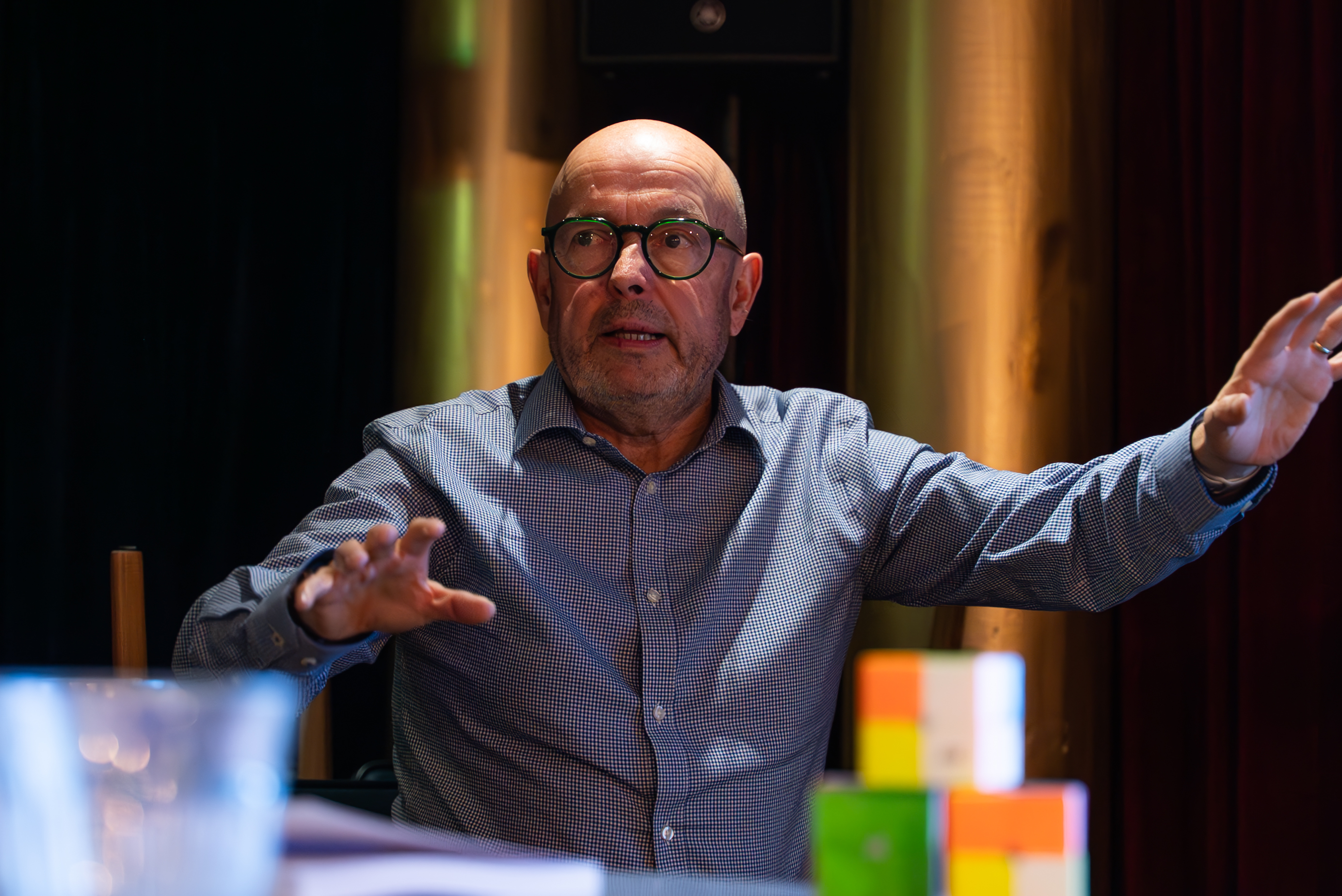The neuroscience of what makes game-based learning effective
By Ken Thompson, Aug 21, 2017 Last updated Jun 13, 2025
There are two disciplines that underpin all learning – neuroscience and psychology.
In this short article, I will briefly look at the latest research about what makes learning effective neurologically.

Image source: http://www.compoundchem.com/2015/07/30/neurotransmitters/
The key role of neurotransmitters in learning
There are more than 100 neurotransmitters, but the image above, from an article by Andy Brunning [1], identifies eight that play a major role in cognitive functions such as learning, memory and motivation.
Andy explains that, “Communication between neurons in the brain is accomplished by the movement of neuro-transmitting chemicals across the gap (synapse) between them. These chemicals are released from the ‘terminal’ of one neuron and accepted by the receptor on the next neuron.”
There are two main types of neurotransmitters: excitatory neurotransmitters, which cause neurons to fire, and inhibitory neurotransmitters, which prevent neurons from firing.
Pete Jenkins [2], in a SlideShare presentation, describes how gamification can stimulate several of these neurotransmitters, which in turn promote beneficial cognitive activities, particularly:
- Dopamine
Associated with feelings of pleasure, satisfaction, addiction, movement and motivation. The satisfaction caused by dopamine can become desired, leading people to repeat behaviours that trigger its release. Games offering novelty and feedback can stimulate dopamine.
- Serotonin
Contributes to feelings of well-being and happiness. Low serotonin levels have been linked to depression, anxiety, and some mental disorders. Exercise and light exposure can improve serotonin levels. Games offering recognition and praise can stimulate serotonin.
- Endorphins
A group of compounds formed from long amino acid chains, released during exercise, excitement, pain, or sexual activity. They create feelings of well-being or euphoria. Games that involve overcoming challenging tasks can stimulate endorphins.
- Oxytocin
Key to how we bond with others, it creates feelings of trust, contentment, and altruism. Games that encourage collaboration can stimulate oxytocin.
The Goldilocks effect: Optimum levels of stress for learning
A paper by Daniela Kaufer of Berkeley University [3] discusses the optimal level of stimulation for learning. It suggests that “moderate stress is beneficial for learning, whilst mild and extreme stress are detrimental... Stress and performance are related in an ‘inverted U curve’. Stimulation to learn requires a moderate amount of stress (measured by cortisol levels).”
Cortisol is one of the three primary stress neurotransmitters, along with adrenaline and norepinephrine. Their interactions are explained further in a short Huffington Post article by Sarah Klein [4].
Kaufer also notes that what feels like moderate stress for one person may feel like low or high stress for another.
Active learning stimulates many different parts of the brain
Kaufer’s research also discusses “active learning”, where multiple brain regions are engaged simultaneously. Blended learning activities that stimulate both lower-level brain functions (such as understanding and remembering) and higher-level ones (such as creativity, analysis, and motivation) are shown to be particularly effective.
Structured repetition is important for learning
In a Guardian article, Ben Martynoga [5], a neuroscientist and science writer, explores the neurological benefits of “spaced learning”. This method teaches content intensively with timed breaks in between. Repeated stimuli with specific intervals convince neurons that an event is worthy of memory.
Ben also reinforces Pete Jenkins’ view that meaningful challenges lead to better learning outcomes, stating that “learning results in physical changes to the brain, but dramatic change requires meaningful tasks and considerable effort”.
Summary
Both neuroscience and game-based learning are evolving disciplines, but research suggests games with the following features are most effective in promoting real learning:
- Moderate stress
- Gaming (uncertainty of outcome)
- Repetition and reinforcement
- Active (or blended) learning
- Novelty, including surprise, excitement or fun
- Teamwork
- Feedback and rewards
- Medium challenge/difficulty

References
1. “A Simple Guide to Neurotransmitters” by Andy Brunning
http://www.compoundchem.com/2015/07/30/neurotransmitters/
2. “Introduction to gamification for customer engagement” by Pete Jenkins
https://www.slideshare.net/petejenkins/introduction-to-gamification-for-customer-engagement
3. “Neuroscience and How Students Learn” by Daniela Kaufer
http://gsi.berkeley.edu/gsi-guide-contents/learning-theory-research/neuroscience/
4. “Adrenaline, Cortisol, Norepinephrine: The Three Major Stress Hormones, Explained” by Sarah Klein
http://www.huffingtonpost.com/2013/04/19/adrenaline-cortisol-stress-hormones_n_3112800.html
5. “Can neuroscience solve the mystery of how students learn?” by Ben Martynoga
